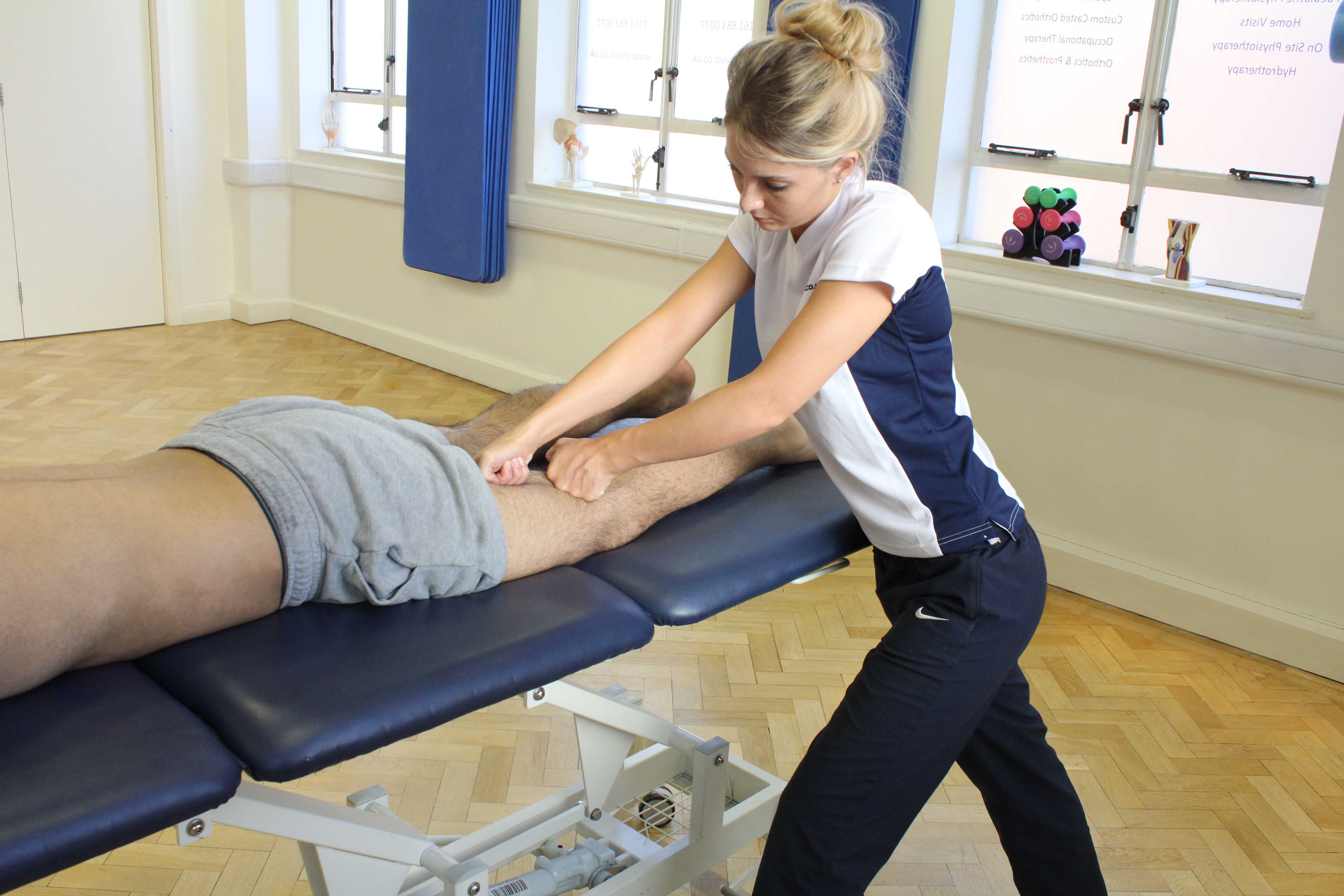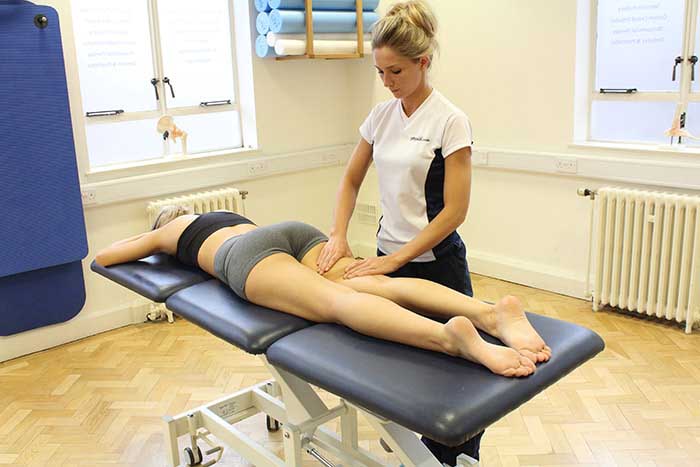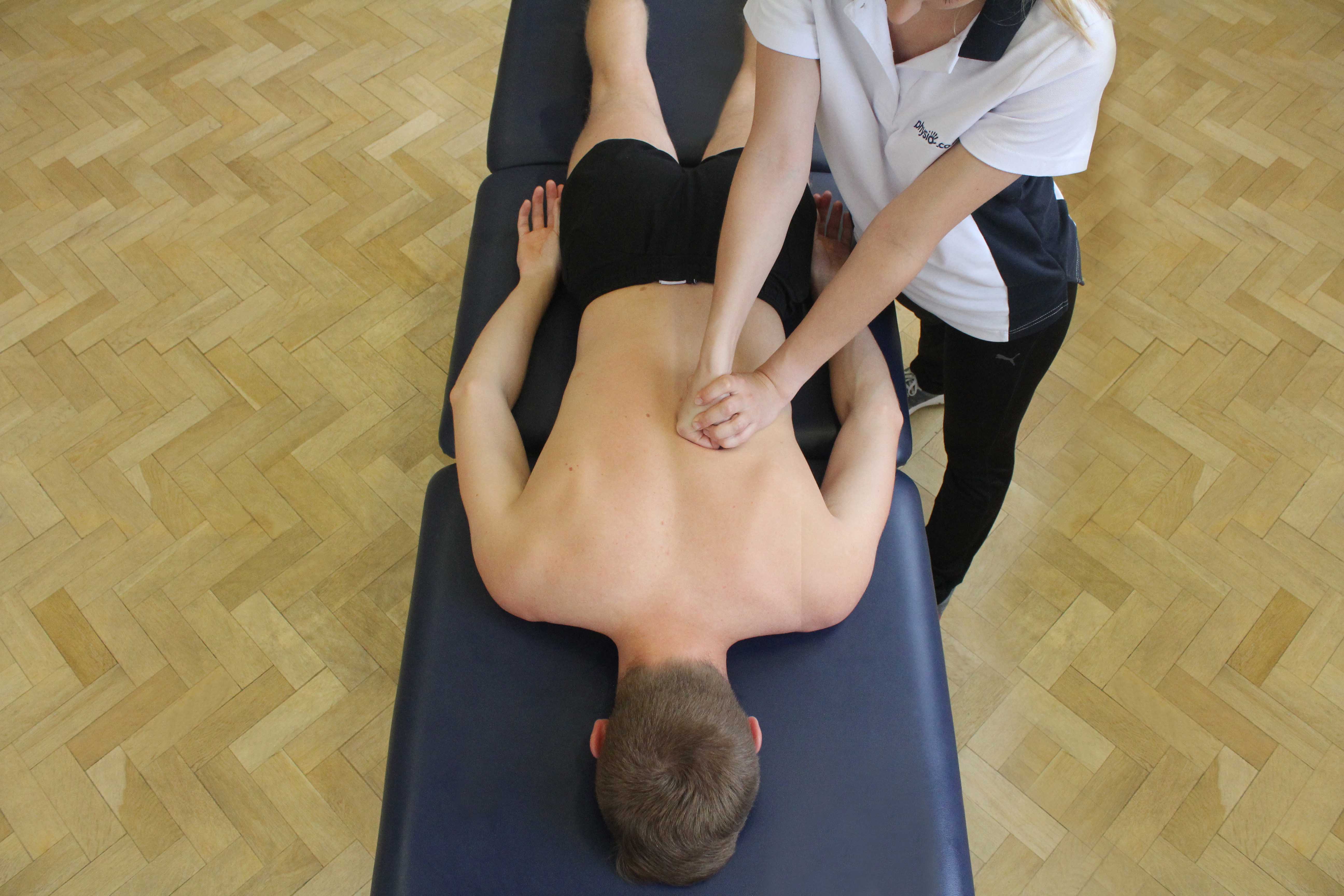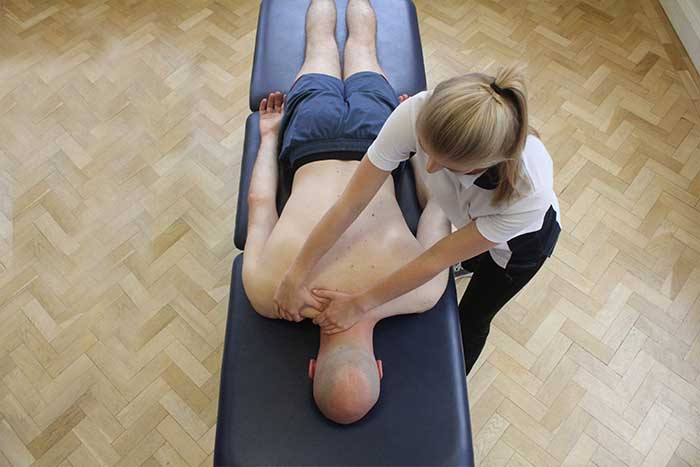Kneading is a massage technique in which pressure is applied to superficial and deep tissues. Kneading is a common massage technique used to treat tight muscles, increase flexibility and decrease pain. Kneading can also be used to produce a therapeutic response to help reduce emotions of stress and anxiety. Massage therapists working at Physio.co.uk can use kneading as an effective massage technique to treat a range of conditions.
What is kneading?
Kneading is a specific massage technique that involves compressing soft tissues. Kneading is a circular technique where tissues are lifted, rolled and squeezed in a compressive action. The pressure is deep and it compresses the underlying muscles. Force is applied across the muscle to break down and realign collagen fibres. Breaking down collagen fibres can relieve restrictive tissue, decrease pain and increase movement.
When is kneading used?
Kneading can help on many circumstances. Kneading is used to:
 Above: Kneading massage technique applied to bicep femoris and semitendinosus muscle
Above: Kneading massage technique applied to bicep femoris and semitendinosus muscleKneading treats high muscle tone. Increased tone is tension in the muscle when at rest. Increased tone comes from an increase in excitatory messages from the nervous system. Excitatory messages are stimulated by emotions such as adrenaline, stress or anxiety. The stimulation of nerves causes muscle tension and muscle tone to increase. Kneading can treat muscle tone by increasing temperature and relaxing the tissues.
Kneading helps reduce muscle tightness by increasing temperature of soft tissues, increasing blood circulation, breaking down adhesions and decreasing tone. Kneading stimulates the increase of temperature by friction against the skin. When temperature increases, the muscle fibres relax and loosen allowing more movement. Kneading also reduces tightness by applying pressure to knots and adhesions. Kneading can break down knots and adhesions by aligning the fibres back to normal form.
Kneading can be a common massage technique used within a therapeutic massage. Kneading lifts up the tissues in circular movements. Kneading can relieve pressure in muscles allowing them to relax. Kneading can also stimulate the nervous system which can produce calmness and reduce emotions of stress and anxiety.

What are the physiological effects of kneading?
Massage can produce many important physiological effects. Some physiological effects of kneading are:
 Above: Kneading massage technique applied to Latissimus dorsi and erector spinae muscles
Above: Kneading massage technique applied to Latissimus dorsi and erector spinae musclesKneading stimulates capillarisation in the blood. Capillarisation is the increase of number of capillaries. When the number of capillaries is increased the amount of blood flow to an area is larger. Capillarisation happens from kneading due to the friction and stimulating movements to the surface of the skin. The increase of capillaries also means there is an increasing amount of oxygen and nutrients to an area which is effective in maintaining health muscles.
Kneading also produces vasodilation. Vasodilation is the widening of blood cells. Vasodilation happens alongside capillarisation and is caused by the increasing temperature in the soft tissues. The process of vasodilation and capillarisation helps increase cellular exchange, allowing more oxygen and nutrients into muscle cells.
Kneading increases flexibility of the muscles by increasing muscle tissue elasticity. Kneading increases tissue elasticity by stretching along the direction of muscle fibres. When muscle tissues are stretched by the kneading technique, muscle spindles in the muscles record a change in the length and process signals into the nervous system. The more tissues are stretched in the muscle, the more muscle spindles adapt to a new muscle length.

What are the benefits of kneading?
Kneading has many benefits. The benefits of kneading include:
Kneading treats areas of tension and can be beneficial in reducing tightness. Kneading relieves tension in the muscle by applying alternate pressures to stretch and mobilise the muscle fibres. Kneading manipulates the muscle fibres, increasing muscle flexibility. Kneading also creates friction on the skin surface causing an increase in temperature and blood circulation.
Kneading also helps to increase flexibility of the muscles. Massage applies pressure to muscle fibres, stretching and elongating them. Stretching muscle fibres is important to increase flexibility. Increasing flexibility of muscles can also help prevent injuries from occurring and maximising performance.
Massage helps relieve and reduce pain within muscles. Massage increases the flow of blood to joints and muscles; increasing temperature. Massage also triggers natural pain killers and feel good hormones that promote the feeling of relaxation. The touch of massage also interferes with pain signals which do not reach the brain; therefore the feeling of pain is reduced.
Kneading is also a relaxation technique that can produce a therapeutic effect. Massage is an effective and beneficial treatment to decrease the feeling of stress. Our body responds to stress physically and emotionally. Certain massage techniques reduce stress by lowering the heart rate, promoting relaxation and simulating feel good hormones.
Common body parts treated by kneading
There are many common body parts that can be treated with kneading. Common body parts treated by kneading are:
Kneading can also be performed on other areas of the body and be effective to reduce pain and muscle tightness.
Summary
Kneading is a massage technique applied with pressure by lifting the muscle in circular and upwards motions. Kneading can be used for high muscle tone, tight muscles and as a relaxation technique. Kneading can produce many physiological effects that include increased capillarisation, increased vasodilation and increased tissue elasticity. There are many benefits of kneading and it can be effective in decreasing tension, increasing flexibility, decreasing muscle pain and reducing stress. Massage therapists working at Physio.co.uk can use kneading as an effective massage technique to treat a range of conditions.
How to receive a kneading massage technique?
The easiest way to receive a kneading massage treatment at Physio.co.uk is to email us at, office@physio.co.uk or you can call us on 0800 033 7800.
Alternatively if you have any questions please feel free to contact us.
We offer a 7 day service and provide home and clinic appointments.

 0330 088 7800
0330 088 7800






































